Tanzania:Emmaberg Proves “No School Cold-Showers is Possible Using Solar Energy”
Evangelical Lutheran Church in Tanzania (ELCT)-Southern Diocesan (SD) under the leadership of the Bishop Dr.-Rev George Fihavango owns Emmaberg Girls High School located in the outskirts of the town of Makambako in Njombe Region, Tanzania. The school enables needy girls to access secondary school to the advanced level.
This article presents the integrated solar project developed to intervene in challenges of unreliable water supply, unavailability of hot water for showers and unavailability of lights in the dormitories when the national grid electricity failed. The project was realized in the partnership of ELCT-SD and SchuPa Tansania e.V The project was financed by SchuPa and Bavaria State Chancellery of Germany.
The school had been experiencing unreliable and costly water supply. The water was being pumped from a borehole using national grid electricity. The school experiences frequent, long and uninformed power outages. When there was a power cut, students had to collect water from the river which is also used by cattle. The water caused skin and abdominal diseases. Urinary tract infections (UTI) cases were common. The food preparation in the kitchen was being delayed due to the untimely delivery of water. In the evening, students had to stay in the darkness in the dormitories.
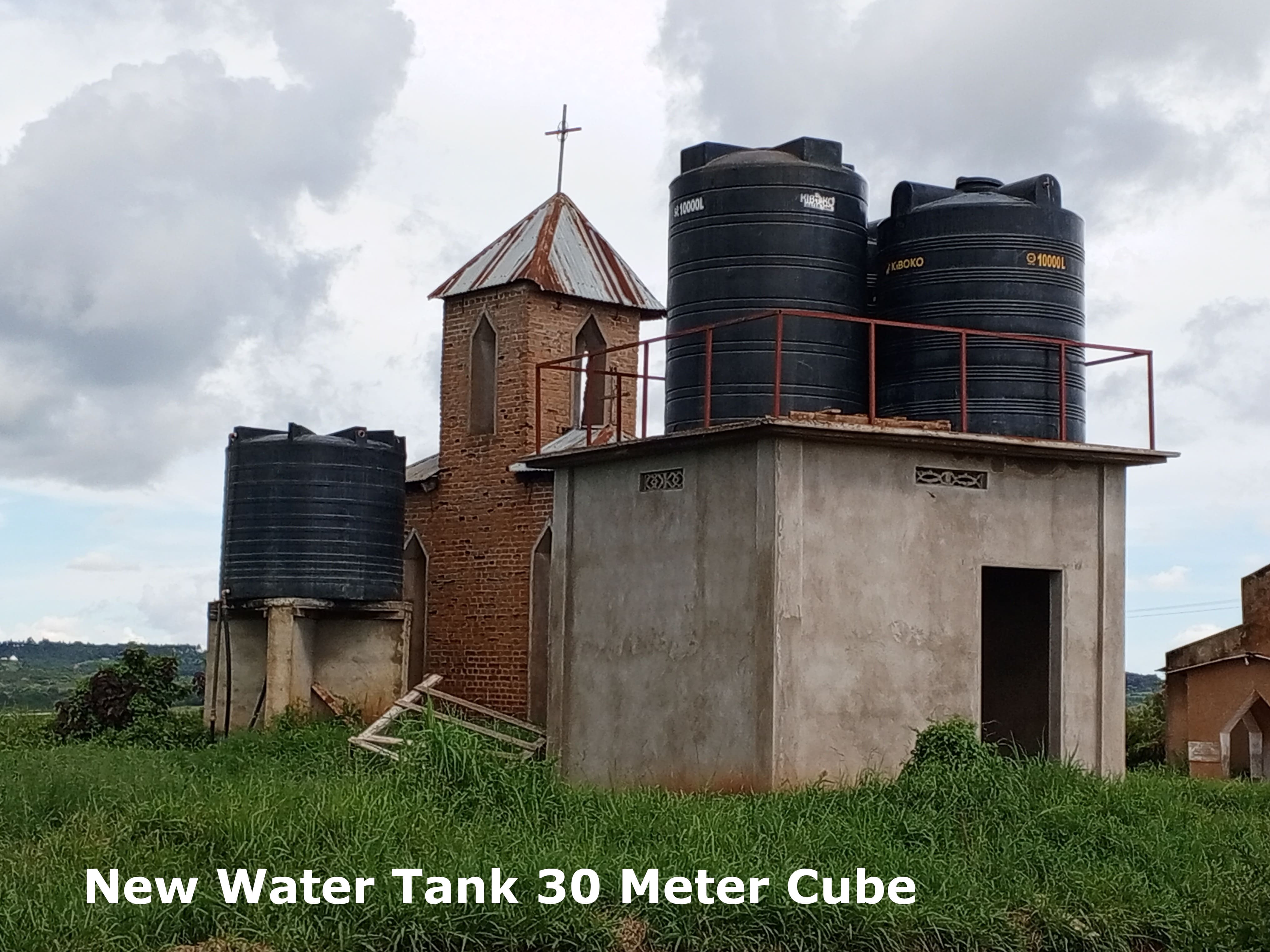
The school is located in a cold region. During the winter, the temperature goes down to 4 Celsius Degree. Since it was expensive to heat shower water using electricity or firewood, most of the students avoided showers up to a month long.
The partners developed a project “Warm Water for the Female High School Students of Emmaberg Girls’ School, Tanzania”. The project results were as follows.
a) Project Outputs
The immediate results of the project were as follows.
i) The new 4m high water tower was constructed.
ii) Water tank capacity increased from 10m3 to 30m3.
iii)Solar PV plant 7.2kW replaced national grid at 100% for water pump.
iv) Water efficient use and energy management devices (pump dry-run sensor and tank-overflow controls) installed in the water system.
v) 2 solar water heaters for showers 1,500 litres and 2,700 litres installed.
vi) 2 solar photovoltaic systems 0.9kWp and 1.8kWp for dormitories lighting installed.
vii) 10 teachers trained in solar systems maintenance.
viii) 200 students sensitized on renewable energy and best practices of using solar systems.
ix) 15 students trained for the Students’ Solar Service Team.
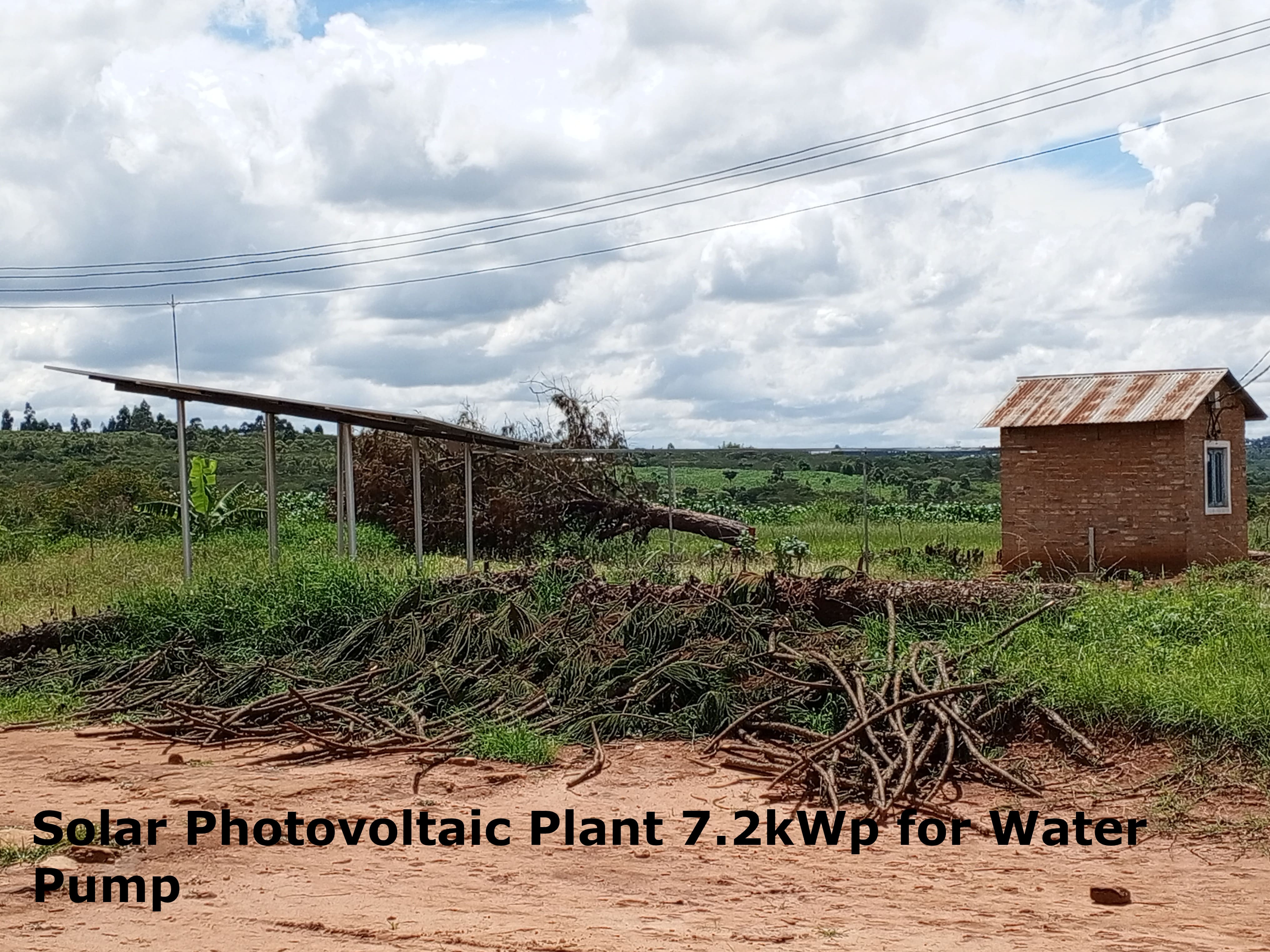
b) Project Outcomes
The intermediate results of the project are as follows.
i) Water supply is efficient, reliable, clean and uninterrupted.
ii) The school is not spending money on water pumping electricity bills.
iii) Girls access hot water for showering.
iv) Girls have reliable and free electricity for lighting in the dormitories.
v) The school has got solar maintenance team in place.
vi) Students are aware of the potential of renewable energy.
vii) The school has a solar service team, and
viii) The number of girls enrolment is increasing.
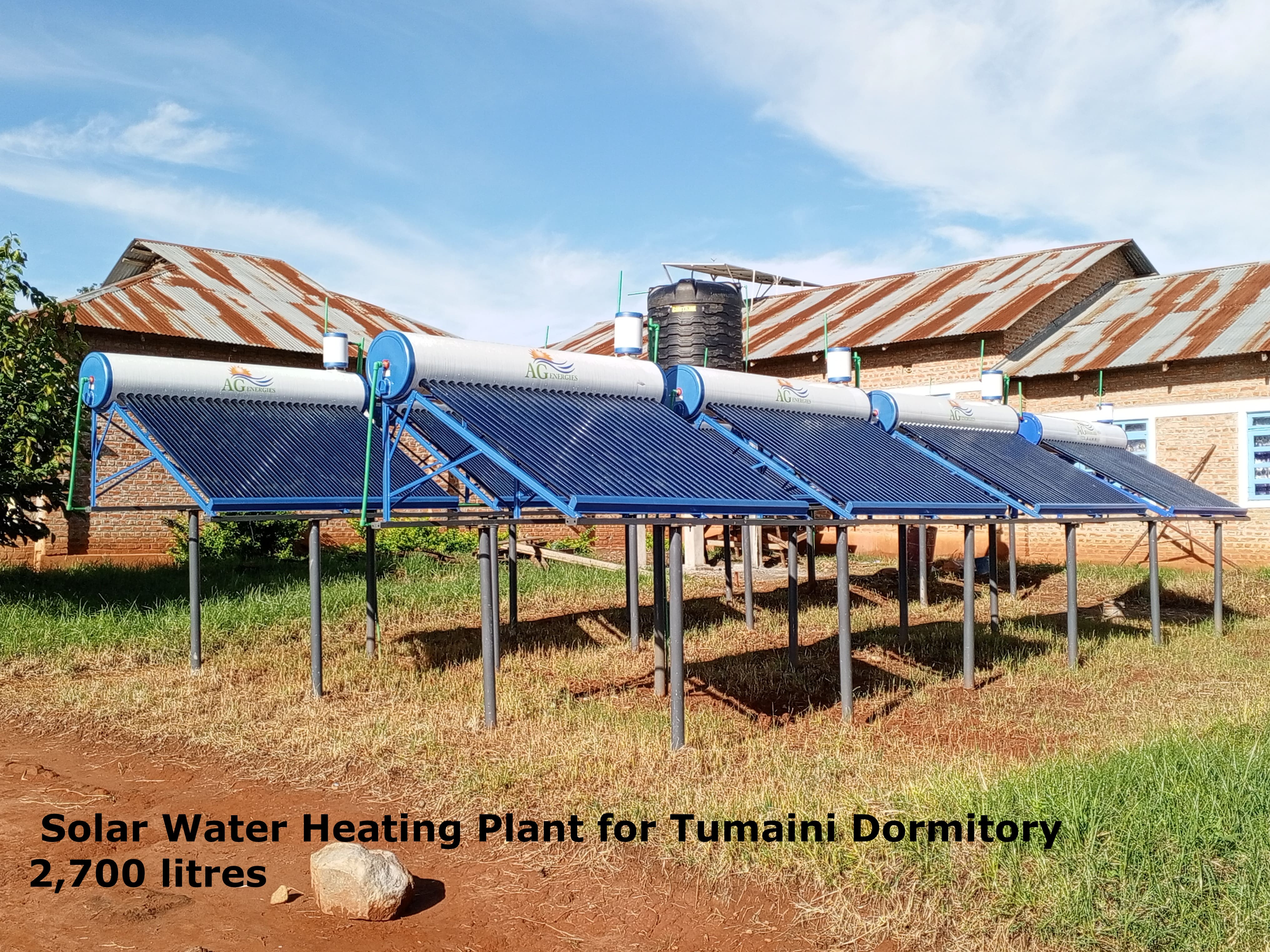
c) Project Impacts
The expected long-term project results are as follows.
i) Girls’ academic performance increased.
ii) Girls live healthy.
iii) School enrolment increased to the maximum capacity.
iv) The school contributed to the climate change trend reverse by avoiding the 22,378 KgCO2eq/year through using water heaters, and 445,442 KgCO2eq/year, for pumping water using solar photovoltaics.
v) School financially stable.
Girls witnessed a change in their quality of life as a result of the project. The following were the witnesses of the girls.
i) Hygiene has increased as girls have chances to take showers at a minimum of two times a day.
ii) UTI and abdominal diseases have diminished as water is safe.
iii) Time for study has increased due to avoidance of duties of boiling shower water and fetching water from the river.
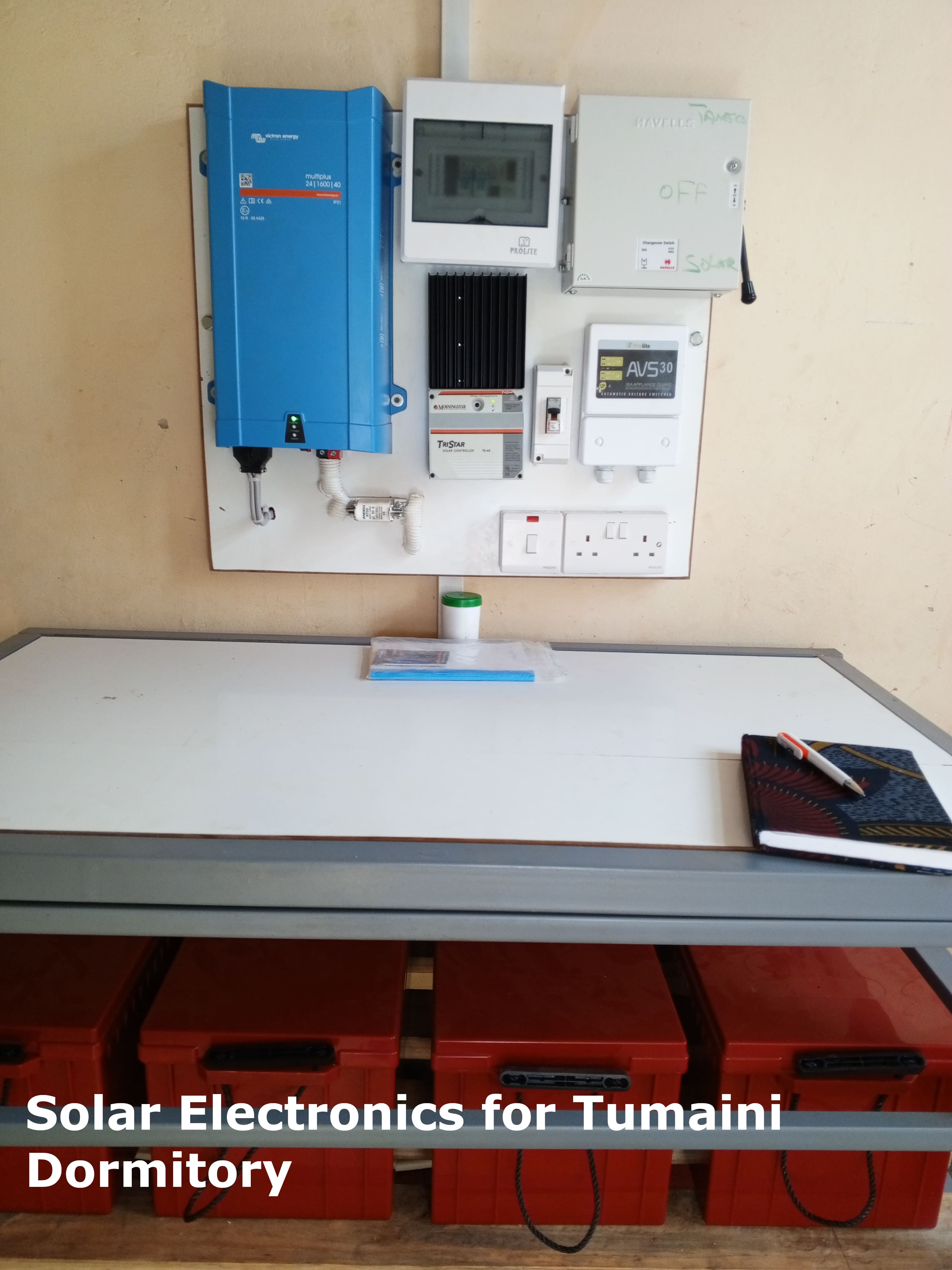
Further, students are aware of the potential of renewable energy in ensuring sustainable development. Students are also aware that cutting bills of electricity for pumping water and lighting for dormitories to zero, will stabilize the school fees.
A project of this kind is the first one in size in Tanzania, supplying a minimum of 4,200 litres of hot water for showers for the academic institution, to be implemented in mainland Tanzania.
Tanzania Renewable Energy Association (TAREA) participated in providing engineering services to the project.
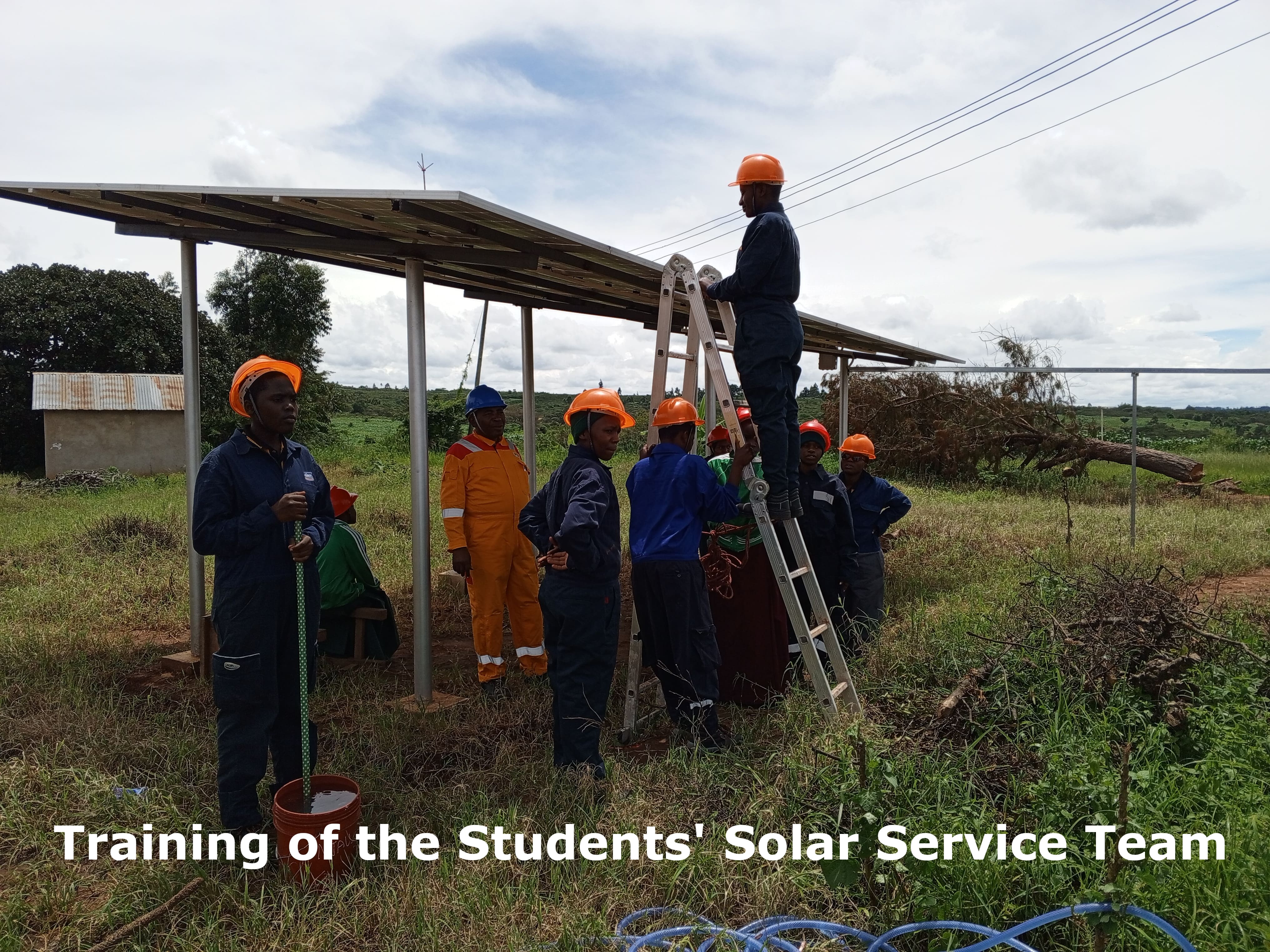
TAREA encourages other potential institutions to adopt the technologies. TAREA will be ready to provide the information and participate in the development process.
In case of any questions about this project, contact the following persons.
Owner of the project (Emmaberg): Mr. Godfrey Kidodelo Email: kidodelo@yahoo.com Tel: +255 754 655 710
Engineering support (TAREA): Dr.-Ing. Matthew Matimbwi
Email: matimbwi@gmail.com Tel: +255 755 086 462







